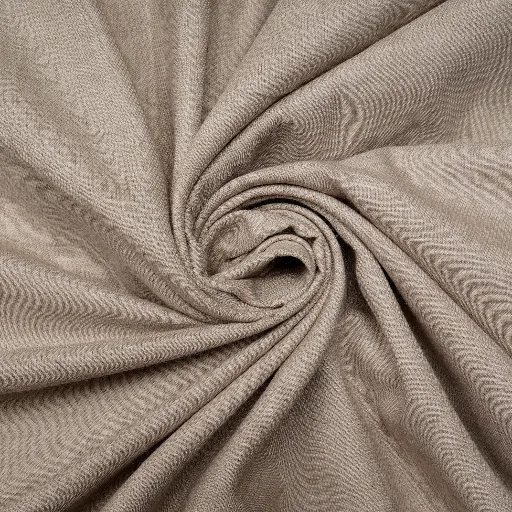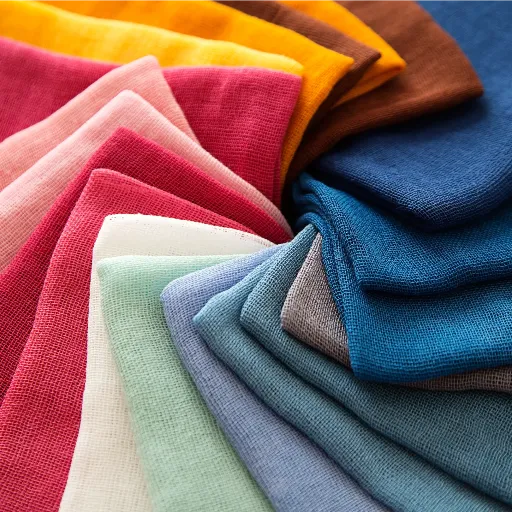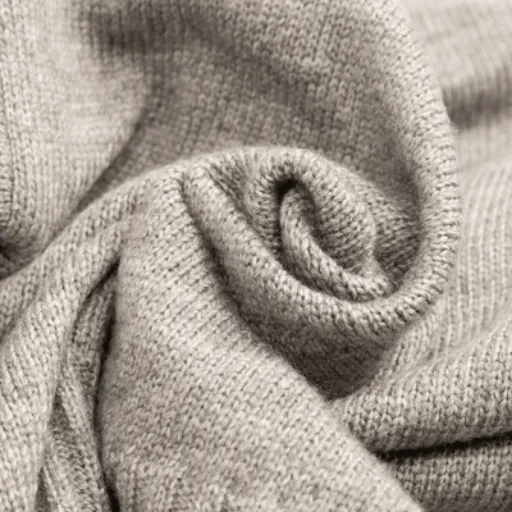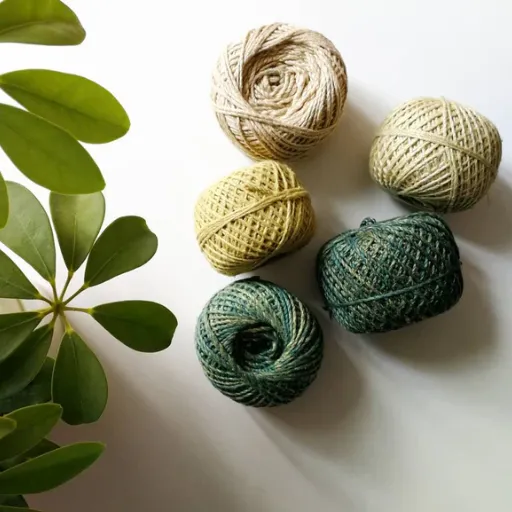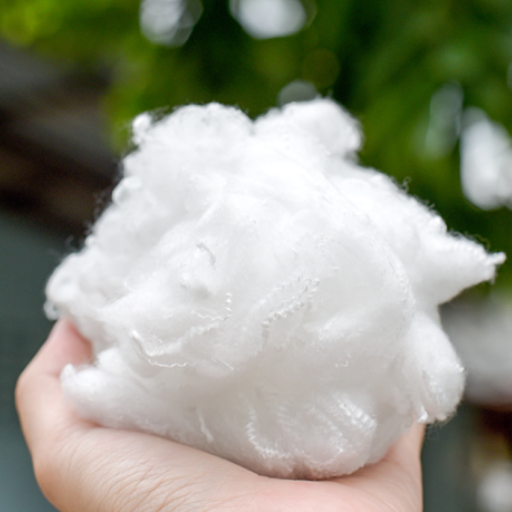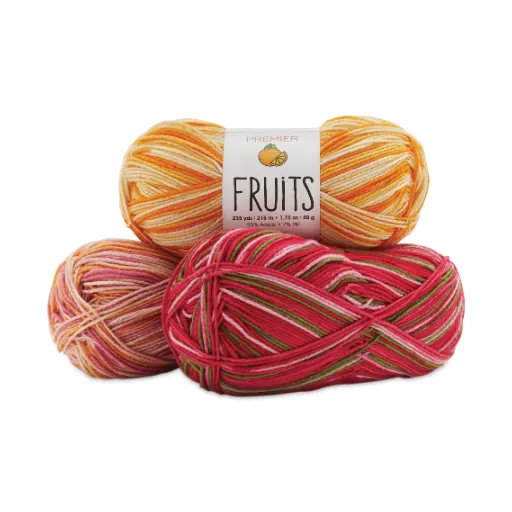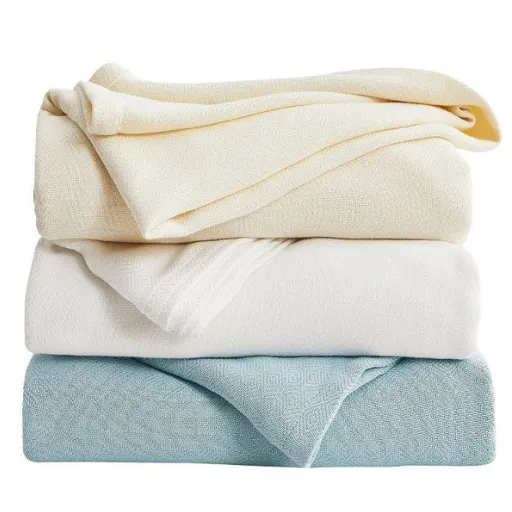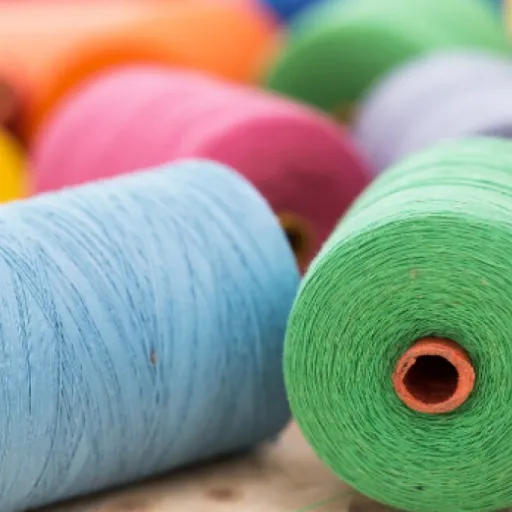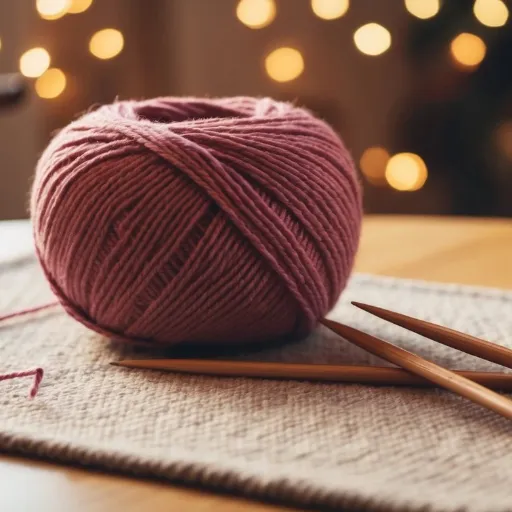Crafting can take many different forms, and polyester yarn allows you to indulge your whole imagination in any form of crafting. From the vast range of artistic projects you can think of, polyester yarn has earned a good reputation among beginner and seasoned crafters alike with its durability and flexibility. There are various characteristics that strand and merge together to make polyester yarn a furniture, clothing and crafting fabric well-loved by many. Your crafting experience will surely grow with some useful tips on how to make the best out of your projects. This blog is meant to provide you with the boost of knowledge that you need after indulging yourself on knitting, crocheting or dabbling into some new textile crafts.
What’s Polyester Yarn?

Polyester fibers, also known as polyester yarn, come from synthetic fibers, and go through an intricate process of polymerization through purified terephthalic acid (PTA) along with monoethylene glycol (MEG). PTA and MEG are derived from petroleum based products. Wrinkles do not damage plastic fibers, along with stretching, shrinking, and the general wear and tear of the fabric making it last much longer than average. Fibers don’t weigh much, are quite easy to take care of, and the colors stick onto them effectively which makes it much used in clothing, fabric that goes to sofas, and craft works.Its use alone or in combination with other fibers is beneficial due to its performance enhancing properties.
Understanding the Fiber Composition of Polyester Yarn
The core chemical composition of polyester yarn comes from the esters that are synthesized through a polymerization reaction. PTA and MEG are the two main constituents. They react to form polyethylene terephthalate (PET), the most common polyester. PET is a polymer made up of repeating units of ester functional groups. That is the reason polyesters are stronger, more flexible, and thermally resistant than other materials.
The development of new polyesters for specific uses as textile materials has been improved through copolymers and chemical additives, which have resulted in better moisture-wicking action, more absorbent to dyes, and anti-static properties. The advantages of these new polyesters materials creates new opportunities of its applications on the industry and consumer products. On the other hand, recycled polyester production from PET bottles is an emerging process that supports world sustainability targets and helps to reduces the ecological footprint. There is no doubt that environmentally sensitive manufacturing technologies are faster reponding to the needs of our time shows that polyester fibres will continue to be at the forefront of the textile industry.
How is Polyester Yarn Different from Other Yarns?
Yarn polyester has significant differences with other types of yarn in the use of synthetic materials, technological and industrial multifunctionality. For example, as natural fibers, cotton or wool were used to obtain yarns, polyesters are made from polymers of petroleum products of oils, and usually from polyethylene terephthalate (PET). Such synthetic rest origins provide certain advantages such as high strength and resistance to stretching and shrinking, high endurance in an assortment of operating conditions, durable, long lasting, and high performance rational value compared to its counterparts to name a few. Compared to natural yarns, polyester also exhibits superior moisture-wicking capabilities and drying time. It is best suited for activewear and outdoor clothing. In comparision with many other natural fibers, polyester also outperforms such as resistance to mold, mildew, and UV degradation. This way it prolongs its lifecycle.
From a sustainability angle, the development of recycled polyester yarns has further differentiated it from other yarns. Compared to traditional manufacturing polyester, recycled polyester made from post-consumer waste like plastic bottles, mitigates the extraction of virgin petroleum sources and reduces greenhouse gases. These innovations distance polyester yarn not only for its technical performance but also its forever-changing alignment towards global environmental goals.
Benefits of Using Polyester Yarn in Crafting
- Durability and Strength
Polyester yarn is best known for its strength and resistance to tearing and stretching, which enables products to withstand intensive use. Research shows that polyester fibers can carry up to 90% of their original tensile strength after considerable wear and handling.
- Moisture Resistance
It also has the tendency to absorb hot water slowly which is a beneficial trait when it comes to bias. Moisture being absorbed by polyester threads is negligible, only amounting to 0.4% of its weight unlike cotton which can absorb upto 25% of its weight.
- Color Retention and Fade Resistance
Polyester yarn is primarily used for active and outdoor gear as it holds dye exceptionally, ensuring long lasting vibrant colors. Exposed to harsh washing conditions or direct sunlight, the dye remains unblemished. Laboratory tests on polyester fabrics showed retaining 80% of its color after 200 wash cycles which is mostfpar surpasses natural fiberd like wool and cotton.
- Eco-Friendly Options
The production processes of recycling PET bottles into polyester yarns have surely improved, as now it is easier to obtain recycled polyester yarn. Production of R-PET polymer yarn facilitates the recycling of plastic bottles which results in lowered dependence on virgin materials and plastic economical consumption. Producing 1 kilogram of R-PET yarn reduces 60% of carbon emmisions and conserves 6 liters of water when compared to traditional methods.
- Versatility in Applications
Its versatility widly ranges and includes thickness and texture which widens the crafting possibilities for knitting, crocheting, weaving, and embroidery. Even quality is consistent and ensures smooth stitching contributing a polished final product.
These reasons illustrate why polyester is a superior crafting material. from an ecological, logistical, and technological perspective, the advantages are immense.
What Types of Polyester Yarn are Available?
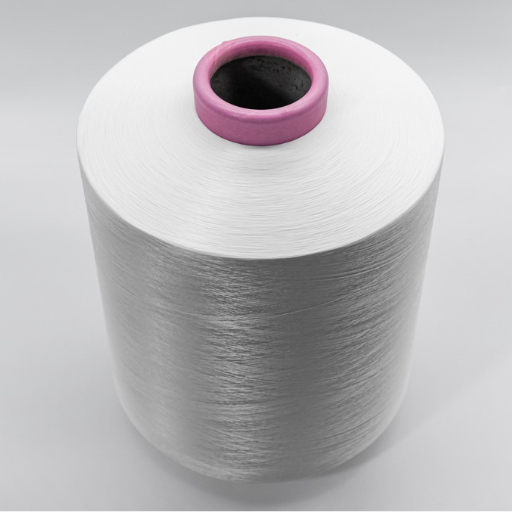
To accommodate the different needs of crafters, polyester yarn offers several types:
- Spun Polyester Yarn: This is soft to the touch and cotton mimicking. The fiber resemblance to natural fibers makes this polyester yarn type ideal for sewing and knitting.
- Filament Polyester Yarn: Unlike spun, filament is strong and smooth as it is made up of long and continuous fibers. Items with durability needs like upholstery or industrial textiles are its primary focus.
- Textured Polyester Yarn: The processing changes focus to the thickness, hence the bulkier nature. Softer fabrics that are stretchable, comfy knits also fall under this category.
- Recycled polyester yarn: This type is produced from old plastic bottles, making her stronger and adaptable just like other Typar Yarns. More importantly, it is environmentally friendly.
Every type of polyester yarn has different characteristics which can be used for various types of crafts or industrial uses.
Chunky vs. Chenille Polyester Yarn: Which Should You Choose?
|
Key Parameter |
Chunky Polyester Yarn |
Chenille Polyester Yarn |
|---|---|---|
|
Texture |
Thick and bulky |
Velvety and soft |
|
Durability |
High durability |
Moderately durable |
|
Best for |
Blankets, rugs, heavy fabrics |
Plush toys, soft home décor |
|
Stretchability |
Limited stretch |
Flexible with slight stretch |
|
Warmth |
Excellent insulation |
Moderate warmth |
|
Ease of Use |
Easy to handle for beginners |
May require care while handling |
|
Weight |
Heavier |
Lighter |
|
Finishing |
Coarse |
Smoother, luxurious finish |
|
Cost |
Generally affordable |
Slightly more expensive |
|
Sustainability Options |
Available in recycled variants |
Limited eco-friendly options |
What Makes Bulky and Plush Polyester Yarn Popular?
Due to its unique combination of appealing, yet functional, bulky and plush polyester yarn is highly sought after in crafting and textile applications. Softness and plushness make cozy blankets, cushions, and comfy apparel. Also, the yarn need cannot be stretched or shrunk, guaranteeing long-term use of finished goods and preserving their shape and look after multiple washes, adds durability.
The broad range of colors and finishes offered is perhaps the most critical reason why it is popular. Modern methods of dyeing give polyester yarns vibrant colors that are fade resistant. This helps crafters and manufacturers a lot. Moreover, anybody from a hobbyist to a large scale textile producer would find the cheap cost of polyester yarn, along with the different thicknesses and weights offered, quite appealing.
From an environmental perspective, the new yarn produced also has recycled polyester options which enables sustainable crafting, making it more eco-friendly. These trends and advancements focus on sustainability while keeping up with performance and durability which adds to its timeless charm used in contemporary and traditional settings.
How to Care for Polyester Yarn Projects?
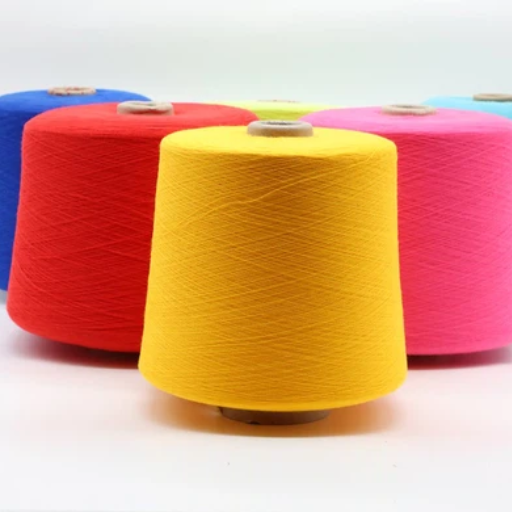
The polyester yarn is simple to maintain and look after and follows these steps:
- Washing: Use mild detergent and cold or lukewarm soapy water when machine washing (gentle cycle). The use of bleach is prohibited as it can destroy the fibers.
- Drying: Shape and texture are best maintained through air drying, but if a dryer is must, choose low heat setting.
- Ironing: Generally, items made with polyester do not need to be ironed. If at all, low-heat ironing with a cloth in between to avoid direct exposure works best.
- Storage: Keep the works out of direct sunlight where it can fade in color, storing them in a cool and dry location is advised.
Care instructions which follow will help retain the quality and durability of projects made from polyester yarn.
Washing and Drying: Is Polyester Yarn Machine Washable?
The yarn made of polyester is typically durable and synthetic, which makes it practical to use for several projects. Because of these qualities, polyester yarns can be washed in a machine and dried using a delicate cycle warm or cold water setting. To ensure safe washing, choose a mild detergent that does not contain bleach. During washes, placing items in a mesh laundry bag is an extra safety measure for intricate patterns. After cleaning, polyester yarns dry quickly, so they can be tumble dried on low heat. However, air drying is preferred. If mixed washes and cares like these are done, projects made out of yarn polyester will remain durable and aesthetic for long periods of time.
Tips for Maintaining the Softness of Your Polyester Yarn
- Wash at Appropriate Temperatures
The yarn should be washed in a machine on a lukewarm or cold setting of 30-40°C (86-104°F). If water is heated further than this, the fibers will soften less over time, since substantial heat during long periods of time will break down the polyester’s structural integrity.
- Use Gentle Detergents
Using soft, nonabrasive bleaches, detergents, or harsh chemicals is recommended. Severe cleaning materials may scrub too harshly and remove the protective covering on the fibers, which results in the fabric feeling rough. As a helper, fabric softeners designed to assist synthetic fibers will help maintain softness.
- Avoid Overloading the Washing Machine
Overloading a machine affects the cleaning process and adds unnecessary friction between yarn projects. This results in a coarser texture over time. Polyester items should be washed together with blended fabrics to reduce damage.
- Use a Mesh Laundry Bag
Use a mesh laundry bag when machine washing small projects to reduce fiber agitation. This preserves distortion and maintains softness and flexibility.
- Dry with Care
While polyester yarns may dry quickly, high heat settings should be avoided. Items can be air-dried flat in well-ventilated areas or set to tumble dry at low or no heat. Drying with low heat aids in maintaining fiber huggability.
Following these tips consistently ensures that polyester yarn creations will sustain the soft and fluffy qualities while maintaining the look and functionality for years.
What are the Best Patterns for Polyester Yarn?
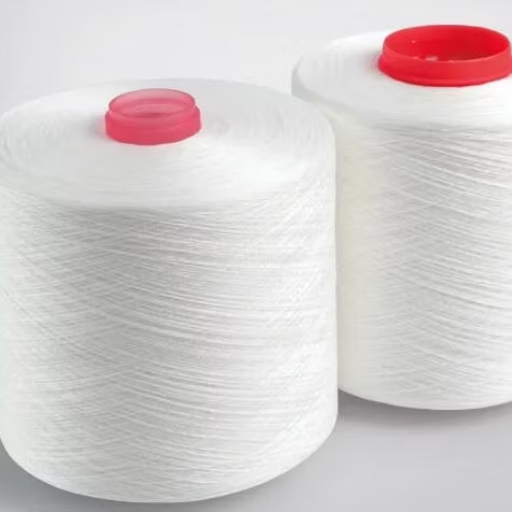
The usefulness of the polyester yarn means that it can be used with several patterns and specific designs which distribute its strength and ability to stretch. Some of the best patterns and designs include:
- Blankets and Throws: Washing and heavy use won’t be an issue for these cozy blankets and throws crafted from polyester yarn. Its softness along with ease of cleaning makes it a great pick.
- Amigurumi: This stuffed toy’s components are small enough to be functional, lightweight, and pliable. The toy’s parts hold together with no problem due to strands of flexible material.
- Hats and Scarves: Accessories like hats and scarves to be worn during intense weather are long-lasting due to polyester yarn’s stretch and provide warmth. It is durable enough for regular use.
- Bags and Pouches: These items benefit a lot from the sturdy touch of polyester yarn since it requires strength and shape retention.
All of these patterns would utilize the unique properties of a polyester yarn making the end result not just appealing to the eye, but also useful.
Top Knitting Patterns for Polyester Yarn
- Cozy Cardigans with Intricate Details
Polyester yarn is splendid for making cardigans because they lightweight and warm. Textured stitches like cables and ribbing are common in cardigans and add depth to the designs while highlighting the yarn’s durability. These features ensure that the cardigan retains its shape after multiple washes.
- Chunky Blankets and Throws
Through my experience, I noticed that polyester yarn is the best option when making home decorations. It is soft and easy to take care of. Using basketweave or garter stitch patterns help create blankets that are striking and take little time to knit and are pilling resistant. These features make it a wonderful material for items that face heavy usage.
- Fashionable Tote Bags
Due to its sturdy fiber property, polyester yarn is highly recommended for structured bag patterns. Popular designs use reinforced base stitching coupled with bright colorwork. It’s very strong so it can support much heavier loads which adds to the functional practicality of these totes making them great for everyday use.
- Breathable Baby Clothes
Knitwear for babies is typically tailored using polyester yarn because of its softness and hypoallergenic properties. Openwork designs, like lace inserts and eyelets, are great for gentle skin while also providing ventilation. Moreover, the yarn’s low upkeep is an added benefit because it makes things easier for the parents.
The given patterns are based on the versatility and practical qualities of polyester yarn which seamlessly integrates beauty and functionality for beginner and advanced level knitters alike.
Popular Crochet Projects Using Polyester Yarn
The crochet industry is well-known for its versatility, especially when using polyester yarn. The soft and warm texture of baby blankets makes them the primary choice. Along with these baby-decorated blankets, throw pillows and curtain covers also make use of the same yarn as it tends to be even more durable and color resistant to repeated wash cycles. Moreover, with the capability of providing warmth while still being cozy, polyester yarn aids in the manufacturing of scarves, hats, and gloves, making them useful throughout diverse climates. As for the plush toys and amigurumi, these are very appreciated in the gifting sector due to their sturdy stature, enabling easy maintenance, making them ideal for children. All these uses highlight the fact that yarn can be created from polyester yarn, implying that it has tremendous artistic potential coupled with practical aspects.
What Should You Consider When Buying Polyester Yarn?
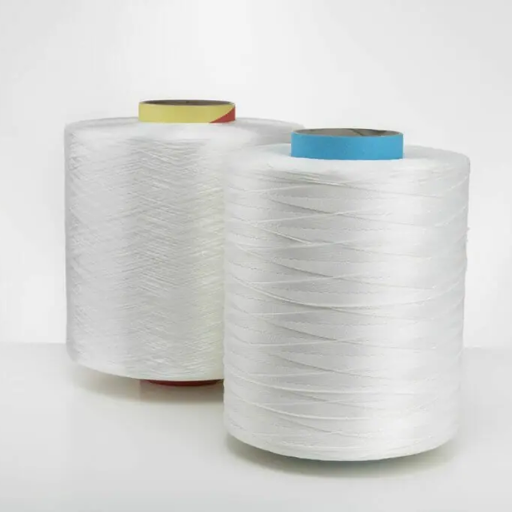
Following the steps below will help you maximize the effortlessly seamless experience of acquiring polyester yarn.
1. Thickness categories: Depending on what task you are looking to fulfill, scroll through the extensive library of polyester filament yarn and pair it with hearing, bulky and worsted to suit it.
2. Texture and Easy on Hands: Make sure the fibers are not rough and meets your criteria especially for clothing which goes in direct touch with the skin.
3. Quality of yarn: Consider buying good quality polyester yarn that has low pilling and abrasion to your cloth product.
4. Care of the item: Although many polyester yarns are machine washable, be sure to look at the specific care guidelines so that it aligns with the maintenance requirements of your work.
5. Color Variety and Resistance to Fading: Pick a yarn that has eye-catching shades as well as remarkable color retention to guarantee your masterpiece retains its beauty attribute even after excessive use or washes.
6. Description of the Project: For accessories, garments to be worn, or even decor choose fabric with appropriate stretch, gloss, and heat for the intended function.
Evaluating these dimensions, you are able to choose the right polyester yarn with the desire of the aesthetics and how it works within the project.
How to Choose the Right Price Point for Polyester Yarn?
Pricing polyester yarn involves balancing several factors that define value and cost in the market. Start by evaluating the yarn’s attributes like protective disks’ softness, durability, and tensile strength. Exceptionally crafted best yarns get better pricing if they add features such as enhanced UV resistance and durability, anti-pilling treatments, and other specialty finishes. Alongside, reputation also helps to make the price higher due to trust and quality, thus brands and large-scale manufacturers raise their price because of their reliable quality and brand loyalty.
In addition, special attention must be given to the application of the yarn. Projects such as garments or heavy-use around-the-house decor that have intricate detailing require a lasting mid-to-high range investment, but short-term projects can be done at a lower price using budget options. Also, storing these under appropriate storage conditions allows for large scale savings, as bulk purchasing greatly reduces costs overall.
Understanding the Durability and Stability of Polyester Yarn
The advantages of polyester yarn include its superior strength and exceptional stability when compared to similar products. Because of their qualities, these yarns are used in a variety of garments and might even be found in industrial fabrics. Synthetic materials such as polyester are highly resistant to the roughening of surfaces like pilling. Contaminants such as water absorption can be greatly reduced due to its hydrophobic properties. This contributes to less shrinkage and mitigates the risk of wear and tear over extended periods. Further refinements in textile technology have added features such as extra UV resistance and additional coatings that limit the proliferation of harmful bacteria, increasing the usefulness of the yarns in outdoor textiles or sportswear. Research suggests that polyester tends to have comparably high tensile strength when measured against most natural filament fibers which further allows them to be subjected to greater strain without any significant changes to their form. Collectively, all of these features make the material easy to maintain, affordable, available all around the globe, durable, and multi-functional.
Reference Sources
-
Weave Structures and Microplastic Emissions: This study explored the tensile strength and microplastic fiber emissions of polyester fabrics with different weave structures (plain, twill, satin).
-
Spinnability of 100% Polyester Yarns: Investigated the effects of raw material, yarn count, twist multiplier, and strand spacing on the properties of 100% polyester and polyester-cotton blend sirospun yarns.
-
Flame Retardant Polyester Industrial Yarns: Focused on achieving high strength and flame retardancy in polyester industrial yarns by blending with long-chain flame retardants.
Frequently Asked Questions (FAQs)
Q: What are the benefits of using 100% polyester yarn for my next knitting or crochet project?
A: 100% polyester yarn is known for being versatile and easy to care for. It is also inexpensive compared to other types of yarn, making it a great choice for various projects including table mats and novelty items.
Q: How does polyester yarn compare to acrylic yarn?
A: While both polyester and acrylic yarns are synthetic, polyester yarn tends to be more durable and resistant to pilling. It also has a softer, fuzzy texture, which can enhance the comfort of your finished project.
Q: What brands offer high-quality 100% polyester yarn?
A: There are several reputable brands that provide high-quality 100% polyester yarn, including Scheepjes. They offer a selection of colors and textures that can suit any crafting need.
Q: Can I use knitting needles or crochet hooks with 100% polyester yarn?
A: Yes, you can use both knitting needles and crochet hooks with 100% polyester yarn. It works well with various needle sizes, allowing for flexibility in your crafting projects.
Q: Is 100% polyester yarn suitable for making fuzzy items?
A: Absolutely! 100% polyester yarn is perfect for creating fuzzy items such as plush toys or cozy blankets, due to its soft texture and ability to hold its shape well.
Q: Will my finished project made from polyester yarn pill over time?
A: While polyester yarn is more resistant to pilling compared to other materials, it can still develop pills, especially with frequent use. Choosing a high-quality brand can help minimize this issue.
Q: What types of projects can I create with 100% polyester yarn?
A: You can create a wide range of projects with 100% polyester yarn, including clothing, accessories, home decor items like table mats, and even novelty crafts. Its versatility makes it suitable for various crafting styles.
Q: How should I care for items made from 100% polyester yarn?
A: Items made from 100% polyester yarn are easy to care for. Most can be machine washed on a gentle cycle and tumble dried on low heat, but it’s always best to check the care instructions specific to the yarn brand used.








